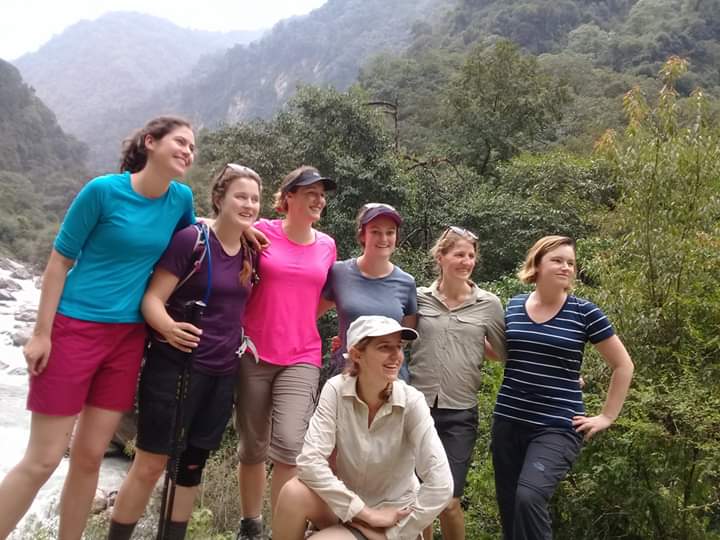Physical Fitness, Altitude and Trekking in Nepal
Posted On:Saturday, May 21, 2022

Physical Fitness, Altitude and Trekking in Nepal makes a vast difference while trekking in Nepal or any other mountainous country. It is advised to stay aware of one’s health condition while trekking in a country like Nepal. The altitude, weather and geography of Nepal change even with small distances. So, it is wise to be prepared for your trip to Nepal.
This blog aims to provide information regarding the importance of knowing about Physical fitness, high altitude and weather but it is only a slight insight. If you have confusion regarding your health, inquire with your trek operator, research further or consult a professional.
Physical Fitness
Physical Fitness, Altitude and Weather while Trekking in Nepal you should know your physical condition to ensure that you don’t land up in the wrong programs and face problems during the trek. Before trek departure from home, one should be physically fit. We suggest some exercise like jogging, hiking and swimming. As trekking in Nepal includes all kinds of terrains, walking up and down hills, altitude changes and unexpected weather at times, it is necessary for you to be physically fit.
High Altitude and Weather in Nepal
This is especially important for people interested in trek for a week or more that involves high altitude or crossing over high passes. Exercise and a positive attitude are recommended measures taken to cope with the situation.
High altitude symptoms usually begin from above 2,500 meters (8,000 ft) for some people. Some may experience altitude problems from 3,000m/10,000 ft. For this reason, we have extra days to get acclimatized on certain altitudes such as Namche Bazaar and Dingboche during Everest Base Camp Trek, Manang during Annapurna Circuit Trek and Sama Gaon during Manaslu Circuit Trek.
High Altitude Sickness is known as AMS (Acute Mountain Sickness) and is of two main types HACE (High Altitude Cerebral Edema water in the brain) and HAPE (High Altitude Pulmonary Edema water in the lung).
Once effected the only solution is to descend to safe low areas. Some people may carry or use Diamox, the drug known as Acetazolamide. It has been used for assisting people with acclimatization when travelling to higher altitudes. Some reports indicate that the drug might be useful in treating the early stages of altitude sickness in addition to its use in prevention.
The symptoms of Altitude Sickness are Headache, Nausea and unwell feeling (is usually improved considerably within 30 minutes of taking the tablets)
The adult dosage is one 250 mg tablet twice a day. The most pronounced and irritating side effect is a tingling sensation which can occur at any site and without warning. The dose can be reduced to 250 mg per day.
If you decide to take any medicine, please inform your guide or group leader. The tablets should not be taken by people who are allergic to sulphur. Severe altitude sickness affects few trekkers and most know when to stop and head back down.
Most treks are designed based on experience and are planned to gain height gradually with days for rest and acclimatization. Above brief information on altitude sickness is to point out what it is and to note the symptoms. Prevention is better than cure and it is simple as well. The most effective way to prevent altitude sickness while trekking in Nepal is to make gradual ascents and take sufficient rest at intermediate altitudes.
Weather Forecast with Season
Climate and Weather in Nepal can be known for four major seasons. Spring starts from mid-February to May, summer from June to August, autumn or falls from September to November and winter from December to mid-February. The weather in the mountains changes frequently and it is advised to inquire before you plan your trek. Nepal can be visited the whole year round depending upon the choice of trekking destination.
March to May is considered the flowering season in the mid hills and valleys where flaming various colours of rhododendron decorate the forest. Other wildflowers magnolia, smaller violets, wild tulips, primroses and other species of flowering plants and trees can be seen around the months. In this season, the entire day is clear for views with pleasant temperatures. Late afternoon can get overcast with chances of rain and snow in higher altitudes.
June to August marks the hot and wet season. Few trekkers visit Nepal during this season but the hills turn green and lush with thick plants and bushes. We mostly run treks around Upper Mustang and Dolpo areas during this season as monsoon rain does not affect much around this arid and dry area.
September to December months are mostly clear during the day with short sunlight hours but can be much colder with an increase in altitude. Especially the morning and night times are cold and the day is pleasant with sunshine and cool air.
Winter months can be visited for trekking except for treks that involve high passes and altitudes as they might be obstructed with snow and making it difficult to find the trail. However, the weather will be fine for short treks.
Physical fitness, high altitude and weather clearly are the factors to help make your trek enjoyable. Make sure you are clear about these before heading on to your trekking journey.


